If milk is going to be transported long distances and hanging about a lot rather than being sold locally and drunk quickly, there’s a strong argument for pasteurising it. But there is a growing number of people who are arguing that locally-produced milk doesn’t have to be. In the process of pasteurisation, beneficial bacteria are killed, reducing the nutritional value of the milk, quite apart from the enormous amount of energy and money required to heat all the milk produced in the country to 72°C. The position of small dairy farms producing raw milk for local markets is, understandably, ‘why should I spend money and waste energy to remove nutrients and flavour from my milk when it’s not necessary?’
In the UK, raw milk sales are illegal in Scotland, but elsewhere ‘green top’, raw milk can be sold, but only direct to the customer, not via supermarkets, and raw milk dairies must conform to higher hygiene standards. We support direct farm sales and small dairies, and feel that the main issue is risk assessment. Someone drinking raw milk every day will be at far greater risk of death or damage from cars than from raw milk.
Here’s some info on raw milk from Hook Farm; here’s the Wikipedia entry for raw milk, and now over to Nigel.
————————————————————————————————————————-
We visit Longleys Farm in Hailsham, East Sussex to interview Steve Hook, the pioneering organic raw milk farmer and indie film star of The Moo Man. We get Steve’s viewpoint on the proven model of raw milk vending machines in Italy, the latest on the FSA’s raw milk consultation and find out whether there will be a Moo Man 2. We also get to see where the raw milk and butter is produced, processed and bottled and meet some of the other stars from the film…
Can you give us a bit of background on the family farm and what inspired you to start selling raw milk in 2007?
Phil, my dad, has been on the farm all his life establishing the herd in 1959 and gaining tenancy in 1972. I joined the partnership in 1991 and our aim is to manage a dairy herd that is truly sustainable; caring for the wildlife and environment around us, whilst making the farm viable enough to support our family.
We converted the farm to organic farming methods in 1998, achieving Soil Association certification in August 2000. This means that we farm without the use of any chemicals or routine antibiotics.
We started selling direct in early 2007 because we believed in the quality of our milk and the demand was there with local people asking for us to supply them. So when the Food Standard Agency (FSA) changed their rules in 2006 we did some research into gaining a raw milk license and started with two local milk rounds. We now do farmers markets in London, including Borough Market, and also offer a nationwide delivery service currently supplying 3500 pints a week.
How does raw milk differ from pasteurised milk and why is it more expensive than supermarket milk?
Raw milk is milk that has not been pasteurised or homogenized. When you buy raw milk it will be from a licensed raw milk producer (of which there are currently around 100), that meet strict standards and are subject to regular inspections by the FSA.
When we started selling our raw milk direct to customers in 2007 we found people prefer the taste and are prepared to pay a premium because they want to buy from a trustworthy source and support local producers.
What do you make of the current UK supermarket milk price war – 95 pence for 4 pints of pasteurised milk is a lot cheaper than your raw milk?
It’s bad news. Milk is now largely viewed as a commodity by consumers and a supermarket price war only serves to further devalue it.
Luckily our customers know what they are buying and are willing to pay a premium for our milk and butter because they value having a direct relationship with us rather than a retailer or middleman.
We need more independent farmers in the UK to start selling their produce direct and educating consumers on the value of high quality locally produced food.
How does the taste differ and are there any health benefits to drinking raw milk?
Raw milk has a purer more creamier taste compared to pasteurised milk. When you pasteurise milk you kill off all the bacteria, even the good stuff and whilst legally I am not able to claim any health benefits, our customers tell us that drinking our raw milk has helped with a range of allergies from hay fever to skin conditions and dairy intolerance.
What do you say to those people that claim drinking raw milk is dangerous?
Look at the stats. If you were to ring the FSA and ask them of the 1 million plus cases of food poisoning per year reported, how many can be attributed to raw milk consumption over the last ten years, they would have to tell you none.
You famously had a vending machine in Selfridges for 3 months but had to remove it due to the Food Standards Agency, do you think now that Italy and other countries are allowing farmers to use vending machines to sell raw milk that it’s only a matter of time before the UK follows suit?
It’s really encouraging. Italy now have over 1400 raw milk vending machines and it is actually illegal to sell pasteurised milk via vending machines. Italy is setting the pace and I recently heard that they have started exporting machines to New Zealand as other countries begin to embrace selling raw milk direct to consumers.
I also strongly believe that these machines should be owned and operated by the farmer to keep the number of links in the food chain to a minimum – this is key to reducing risk and ensuring full traceability from farm to consumer.
The FSA are currently conducting a consultation on raw milk and I spoke at an open debate held in London on Monday the 31st March. The meeting had over 250 attendees (mostly whom were pro raw milk) and was broadcast live via a podcast; this level of transparency bodes well and it was great platform to have a proper discussion on raw milk.
Whether we will be allowed to sell our raw milk via farmer owned vending machines in retail premises is hard to say. It comes down to whether we want to be at the forefront of the raw milk industry or a backwater and it seems to me that there is a strong correlation between the strength of a country’s pasteurisation industry and their attitude to the sale of raw milk.
The signs are encouraging but we won’t know until the consultations findings are announced in July; from what we hear the FSA’s preferred outcome is to keep the current rules in place, to allow licensed UK raw milk producers to continue selling their milk direct from the farm gate and via the internet but stopping short of Italy’s proven vending machine model.
We understand that The Moo Man has been adopted as the main film as part of the United Nations International Year of the family farm – how has the film impacted on your livelihood and will we see a Moo Man 2?
It’s had a huge impact. Without the film we would never have travelled to many of places we’ve been for the various film festivals and Q&As as part of the tour of the independent cinemas the film was shown in.
Going out to the Sundance festival in Utah was an amazing experience for dad and me – with all the attention and media you couldn’t get more removed from the milking parlour.
Also I am incredibly proud that The Moo Man has been adopted by the United Nations as their main campaign film for the International Year of the Family Farm. So far it has been screened in Brussels and Vienna and possibly may be shown in London this July too.
Finally I can tell you that the directors Andy and Heike are working on The Moo Man 2 so watch this space.
Finally, how do you drink your milk?
On my cereal in the morning but also love to drink it on it’s own. You can’t beat a thick slice of rye bread and some of our butter or ghee either!

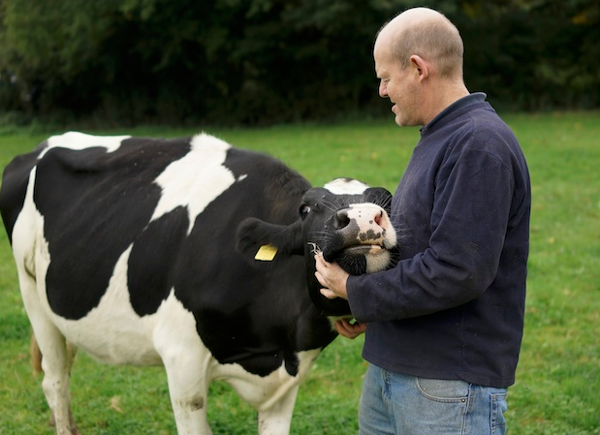
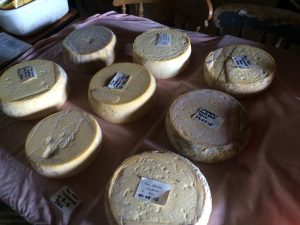
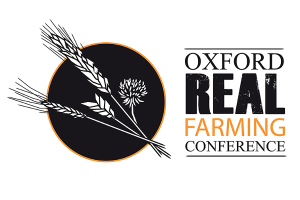
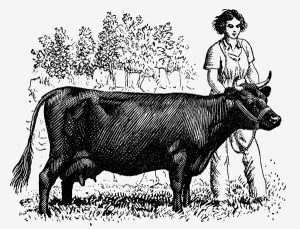
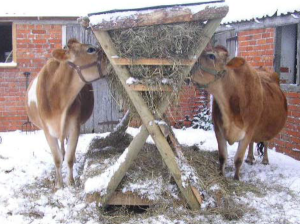
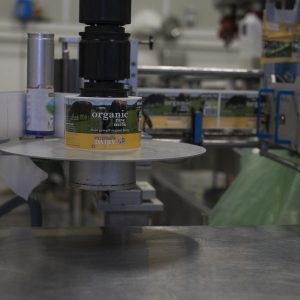
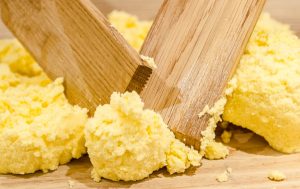
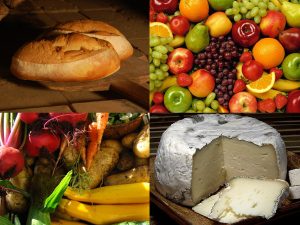
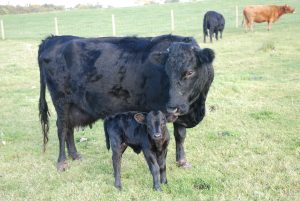
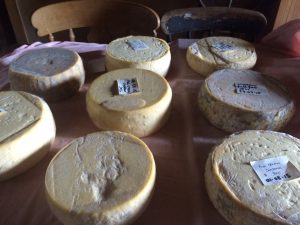
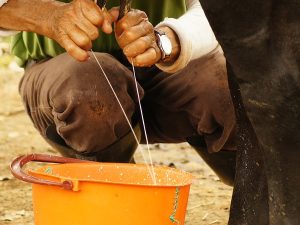
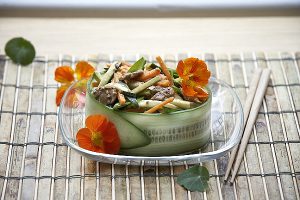
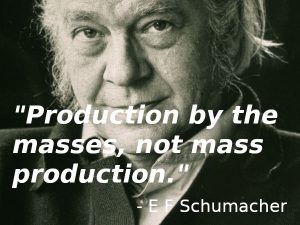
8 Comments
Wonderful article, most encouraging. Thank you!
Thank you for the article. While I believe raw milk is better than pasteurised milk, I am not sure animal milk can be sustainable at all. I do not think the claim of “I joined the partnership in 1991 and our aim is to manage a dairy herd that is truly sustainable” can ever be met with dairy cattle producing high levels of methane.
I do commend the movement to a more natural product but I do not think it is particularly natural for humans to consume a product meant for calves.
Hi Dani,
As with most things, I think it’s about scale. There’s a conference coming up early next year, which we’ll blog about soon, on micro- and nano-dairies, where people have just a few cows, and (I believe), calves aren’t taken away from mothers. But, as usual, everything tends towards the large-scale and the corporate – and the entirely unsustainable.
But when it comes to food, agriculture itself isn’t natural, only wild food is. Removing forests to produce farmland, ploughing it and growing wheat or veg is no more natural than keeping a few cows on a smallholding.
Here you do Dani – http://www.the-calf-at-foot-dairy.co.uk/about-our-dairy.html
That’s the way to do it.
Dairy cows have an unmatched ability to convert inedible grass into edible protein and fat. Getting rid of dairy cows is not the best way to reduce methane levels; stopping using fossil fuels is much more reliable, and it has to be done anyway.
Methane is a more powerful greenhouse gas than carbon, but it disappears from the atmosphere quicker: carbon remains stable for much longer. This means that a relatively small reduction in methane emissions (the IPCC says “less than 30 percent”, other sources estimate around 10 percent)* would stabilize the amount of methane in the atmosphere at current levels. By contrast it will take an over 80 percent reduction in carbon dioxide emissions to stabilize carbon in the atmosphere.
In theory then halving livestock’s 35 percent** share of methane emissions would stabilize methane in the atmosphere or go a long way towards doing so do so. However, eliminating cattle from grasslands would not be a reliable way of reducing methane because they may be replaced by bison, wildebeest, antelopes, termites, wetlands, rotting grass or bush fires — all of which also produce methane.
It would be more reliable to eliminate the 25% of anthropogenic methane emissions caused by fossil fuel extraction, since this methane would then stay safely underground. Since we have to stop using fossil fuels anyway because they cause about 70 percent of all greenhouse gas emissions, the methane caused by livestock is a secondary problem now and would be even less of one if we reduce livestock levels by half.
Dairy cows are about three times more efficient at producing protein, fat and calories than beef cattle . It costs little to feed them if they are part of a mixed farm ,as the grass and legumes they thrive on constitute the indispensable fertility building part of an organic rotation. If we do reduce livestock levels it makes much more sense to reduce the number of beef cows, especially beef cattle fed on grain and soya in feed lots, and cattle being farmed in rainforest areas.
* Less than 30 per cent from IPCC FAQ 10.3. ; 10 per cent or less from numerous sources, eg Oxford University Environmental Change Institute, Methane UK http://www.eci.ox.ac.uk/research/energy/downloads/methaneuk/chapter02.pdf
** FAO gives 35 per cent http://www.fao.org/agriculture/lead/themes0/climate/en/ The wikipedia pie chart (derived from WRI) gives 40 per cent for agricultural byproducts but this will also include emissions from rice. http://en.wikipedia.org/wiki/File:Greenhouse_gas_by_sector_2000.svg
If you wish to read more on this subject, my book Meat A Benign Extravagance is available for £8 including postage (UK) from [email protected]
Moo man is a beautiful film and I’d encourage you all to see it. Look forward to the sequel and we wish Steve and his family the very best. The milk is absolutely delicious too!
I would perhaps also draw attention to the ability of cows to build soil and thus sequester carbon in a stable form helping to balance a large amount of their CO2 emissions – and also the role of methanotrophs, that actually metabolise the methane – once again further reducing the cow’s impact on CO2 emissions. These aspects aren’t often talked about, but are surely important especially when we’re discussing cows that are grass-fed.
Living in a rural land based community for over 30 years, I had good fortune to joy raw milk and it contributed to my health now 84 yers young.
I hope the Italian example can be copied in the UK.
The public have been consistently washed with the fear factor and this has resulted in the sueing mentality if anything goes a little bit wrong.
Im not advocating there isn’t an appropriate place for laws to protect, but its about finding the facts and taking responsibility for ones own actions.
Guernsey cow milk for ever except for cheese making !